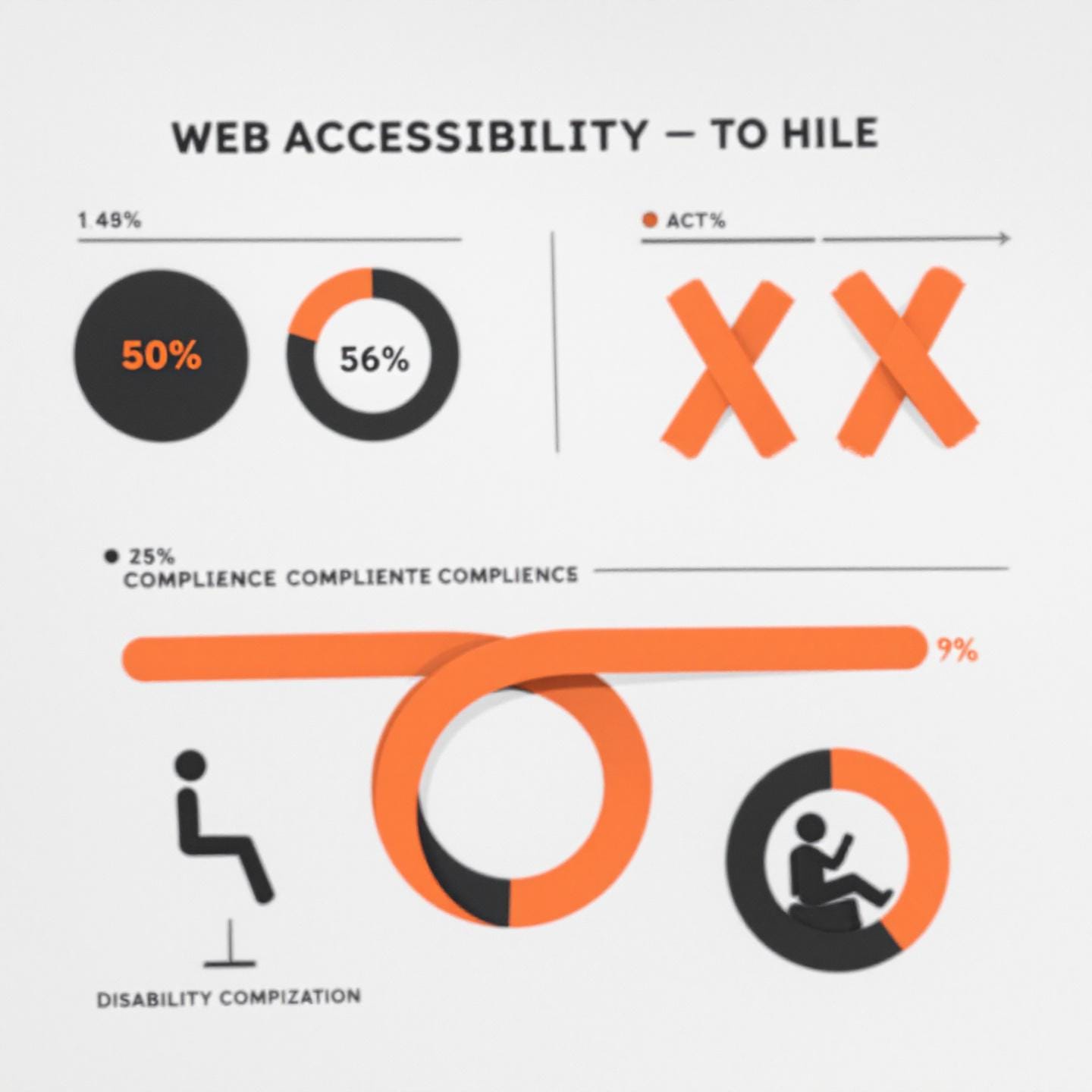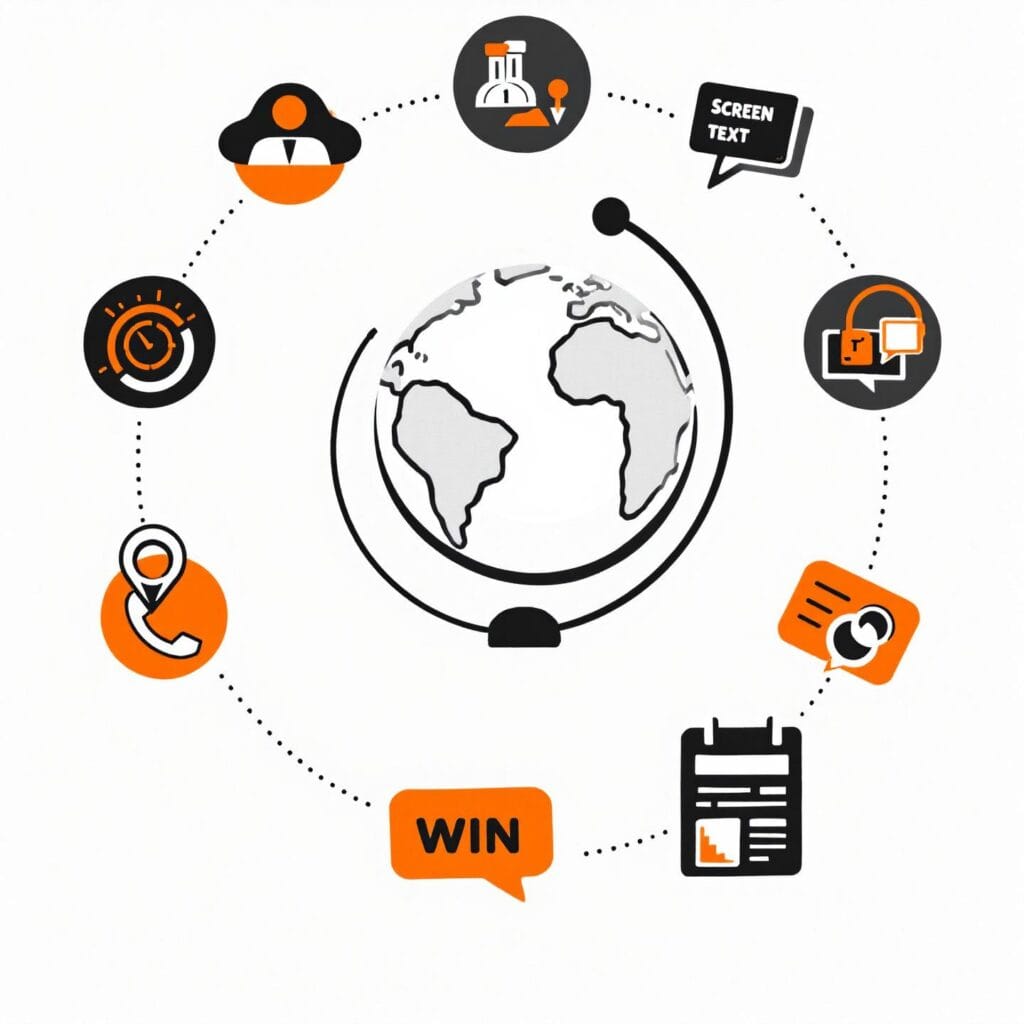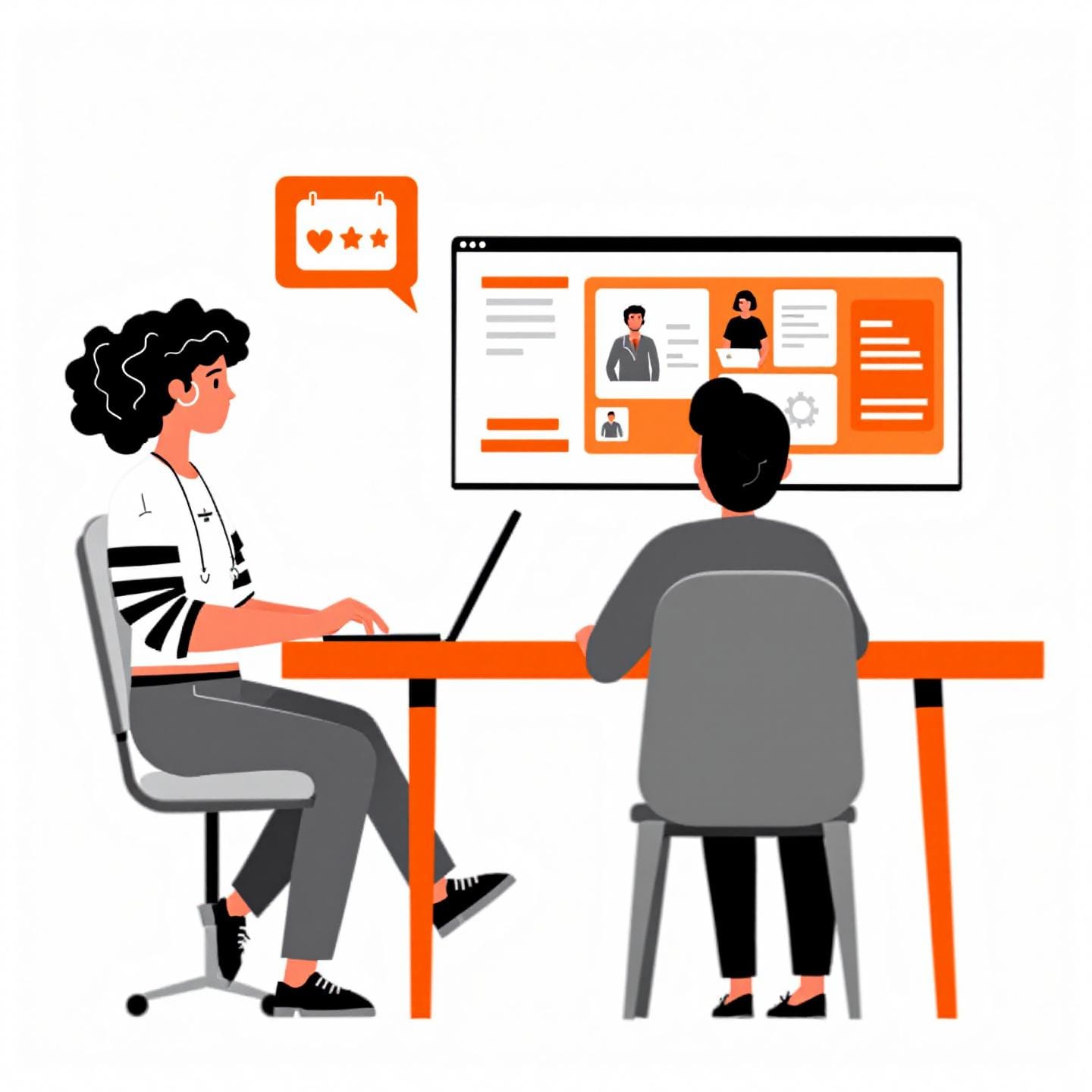Web accessibility is no longer a luxury but a necessity for nonprofit organizations. With more people relying on the internet for information and services, ensuring your website is accessible to everyone, including those with disabilities, is both a legal requirement and an ethical imperative. In this comprehensive guide, we’ll explore how nonprofits can create fully inclusive websites that meet accessibility standards while enhancing the overall user experience.
Recent statistics highlight why accessibility matters. According to WebAIM’s analysis of the top one million websites, 94.8% had detectable WCAG (Web Content Accessibility Guidelines) failures. Even more concerning, 71% of users with disabilities immediately leave inaccessible websites, and 86% won’t return after a negative accessibility experience. For nonprofits relying on their websites to attract donors, volunteers, and community members, these numbers represent significant missed opportunities.
Table of Content

Understanding Web Accessibility for Nonprofits
Web accessibility means designing websites that can be used by everyone, regardless of their abilities or disabilities. For nonprofits, creating an accessible website isn’t just about compliance, it’s about fulfilling your mission of serving all community members equitably.
The Legal Landscape
In Canada and the United States, various laws govern web accessibility for organizations:
- In the US, the Americans with Disabilities Act (ADA) applies to nonprofits providing services to the public. While the ADA predates the internet, courts have consistently ruled that digital content must be as accessible as physical spaces.
- In Canada, the Accessibility for Canadians with Disabilities Act (ACA) and provincial legislation like the Accessibility for Ontarians with Disabilities Act (AODA) establish accessibility requirements for many organizations.
- Both countries generally reference the Web Content Accessibility Guidelines (WCAG) as the appropriate standard for digital accessibility compliance.
Nonprofits that fail to comply face potential lawsuits, legal fees, and reputational damage that can undermine fundraising and volunteer recruitment efforts. In fact, digital accessibility lawsuits are projected to increase by nearly 20% in 2025, making proactive compliance more important than ever.
Essential WCAG Guidelines for Nonprofit Websites
The Web Content Accessibility Guidelines (WCAG) provide a framework for creating accessible websites. The guidelines are organized around four principles: Perceivable, Operable, Understandable, and Robust (POUR).
Perceivable: Content Must Be Available to the Senses
- Provide text alternatives for non-text content like images, videos, and audio
- Ensure sufficient color contrast between text and background (minimum 4.5:1 ratio)
- Make content adaptable so it can be presented in different ways
- Include captions and audio descriptions for multimedia content
Operable: Interface Elements Must Be Navigable
- Ensure all functionality is accessible via keyboard
- Provide users enough time to read and interact with content
- Avoid content that could trigger seizures or physical reactions
- Implement clear navigation and wayfinding mechanisms
Understandable: Information Must Be Clear and Predictable
- Make text readable and understandable for your audience
- Design content that appears and operates in predictable ways
- Help users avoid and correct mistakes on forms
- Use plain language appropriate for your audience
Robust: Content Must Work With Current and Future Technologies
- Ensure compatibility with assistive technologies through proper HTML
- Follow web standards to maximize compatibility with browsers and tools
- Use ARIA attributes appropriately when HTML semantics are insufficient
Practical Accessibility Features for Nonprofit Websites
Let’s explore the key accessibility features that nonprofits should implement to create inclusive websites:
Keyboard Navigation
Many users with motor disabilities rely on keyboards rather than mice to navigate websites. To ensure keyboard accessibility:
- Test your entire website using only a keyboard (Tab to navigate, Enter to select)
- Ensure a visible focus indicator shows which element is currently selected
- Implement logical tab order that follows the visual flow of the page
- Add “skip to content” links at the top of pages to bypass repetitive navigation
Alternative Text for Images
Alternative text (alt text) describes images for users who cannot see them, including people using screen readers and those with slow internet connections.
- Provide descriptive alt text for all informational images
- Keep alt text concise (generally under 125 characters)
- Use empty alt attributes (alt=””) for decorative images
- Include relevant details about the image’s purpose and content
For example, instead of “Donation image,” use “Group of volunteers building a house during our annual community project.”

Video Captions and Audio Descriptions
Make multimedia content accessible to users with hearing and vision impairments:
- Provide accurate captions for all video content
- Include audio descriptions that narrate important visual information
- Offer transcripts for audio-only content like podcasts
- Consider adding sign language interpretation for important video content
High-Contrast Mode and Text Resizing
Users with low vision often need customized display options:
- Ensure text meets contrast requirements (4.5:1 for normal text, 3:1 for large text)
- Test your website with high-contrast mode enabled
- Allow text to be resized up to 200% without loss of content or function
- Avoid using color alone to convey information
Clear Layouts and Navigation
Straightforward design helps all users, especially those with cognitive disabilities:
- Create consistent, predictable navigation throughout your site
- Use descriptive page titles and headings to create clear structure
- Organize content in logical, meaningful sequences
- Provide multiple ways to find content (navigation menu, search, sitemap)
Implementing Accessibility in WordPress for Nonprofits
WordPress powers approximately 58% of nonprofit websites, making it the dominant content management system in the sector. Here’s how to optimize WordPress for accessibility:
Choosing an Accessible Theme
Your WordPress theme provides the foundation for accessibility. When selecting a theme:
- Look for themes explicitly labeled as “accessibility-ready”
- Test themes with accessibility tools before committing
- Verify proper heading structure, keyboard navigation, and ARIA support
- Choose themes with responsive design that works across all devices
Recommended accessible themes include Twenty Twenty-Four (free), Astra, GeneratePress, and Kadence.
Essential WordPress Accessibility Plugins
Several plugins can help enhance your website’s accessibility:
- WP Accessibility: Fixes common accessibility issues and adds tools like a font size widget
- Accessibility Checker: Scans content for accessibility problems as you create it
- WP ADA Compliance Check Basic: Tests your site against WCAG standards
While these plugins are helpful, remember that they’re aids rather than complete solutions. Manual testing and human review remain essential.
Content Creation Best Practices
Train your team to create accessible content from the start:
- Use the built-in heading structure (H1 for page title, H2 for main sections, etc.)
- Create descriptive link text (avoid “click here” or “read more”)
- Add alt text to all images through the WordPress media library
- Use the table tool for tabular data with proper headers
- Test forms for keyboard accessibility and clear error messages
Testing and Maintaining Accessibility
Accessibility isn’t a one-time project but an ongoing commitment. Implement these practices to ensure continued compliance:
Automated Testing Tools
Use these tools for initial screening:
- WAVE Web Accessibility Evaluation Tool: Provides visual feedback on accessibility issues
- Accessibility Insights: Offers guided assessments for web content
- Axe DevTools: Identifies accessibility issues during development
Remember that automated tools typically catch only about 30-40% of potential accessibility issues, making manual testing crucial.
Manual Testing Techniques
Supplement automated testing with these manual checks:
- Navigate your entire site using only a keyboard
- Test with screen readers like NVDA (Windows), JAWS, or VoiceOver (Mac)
- Verify color contrast using tools like the WebAIM Contrast Checker
- Review all forms for clear labels and error messages
- Check that all videos have accurate captions

Ongoing Maintenance Strategies
Keep your website accessible as it evolves:
- Train all content creators on accessibility best practices
- Include accessibility checks in your content approval process
- Conduct quarterly accessibility audits of your entire site
- Document your accessibility policy and make it publicly available
- Provide a feedback mechanism for users to report accessibility issues
Check our Accessibility Care Plan, designed to help you maintain an accessible and user-friendly website, our plan includes a powerful accessibility plugin and dedicated monthly support to review reports and fix any new issues.
The Benefits of Accessibility Beyond Compliance
Implementing accessibility offers advantages beyond legal compliance:
Increased Engagement and Reach
An accessible website reaches more people, including the approximately 26% of adults in the United States who have some type of disability. This expanded reach translates to more donors, volunteers, and community members engaging with your mission.
Improved SEO and Search Rankings
Many accessibility practices align with search engine optimization (SEO) best practices:
- Proper heading structure helps search engines understand your content
- Alt text provides context for image searches
- Descriptive link text improves navigation and indexing
- Site speed and mobile-friendliness (both accessibility factors) are key ranking signals
Enhanced User Experience for Everyone
Accessibility features benefit all users, not just those with disabilities:
- Clear navigation and structure help everyone find information more easily
- Video captions benefit people in noisy environments or those who prefer reading
- Responsive design works better across all devices
- Simplified language helps users with limited literacy or English proficiency
Demonstration of Social Responsibility
For nonprofits, an accessible website demonstrates a commitment to inclusion that aligns with your mission and values. It shows that you practice what you preach about equity and access, strengthening your credibility with donors and community members.
Cost-Effective Approaches for Nonprofits
Improving accessibility doesn’t have to break your budget:
Phased Implementation
Address accessibility in stages, starting with the most critical issues:
- Phase 1: Fix major barriers like keyboard traps, missing alt text, and form labels
- Phase 2: Address color contrast, heading structure, and link text
- Phase 3: Implement advanced features like audio descriptions and enhanced navigation
Prioritizing High-Impact Areas
Focus first on the most visited and important areas of your website:
- Homepage and main landing pages
- Donation forms and volunteer sign-up processes
- Content about your mission and impact
- Contact information and support resources
Leveraging Volunteer Expertise
Many professionals are willing to volunteer their skills:
- Reach out to web developers in your community for pro bono support
- Partner with local universities for student projects
- Connect with accessibility experts through platforms like Catchafire or LinkedIn for Good
Conclusion: Building a More Inclusive Digital Presence
Creating an accessible nonprofit website isn’t just about meeting legal requirements, it’s about fulfilling your mission to serve everyone in your community. By implementing the accessibility features outlined in this guide, you’ll create a more inclusive digital presence that reaches more people, improves user experience, and strengthens your organization’s impact.
Remember that accessibility is a journey, not a destination. Start where you are, implement improvements incrementally, and commit to ongoing learning and enhancement. Your efforts will create a more equitable online space where everyone can access your services, support your cause, and engage with your mission.
By embracing accessibility as a core value rather than a compliance checkbox, your nonprofit can lead by example and create digital experiences that truly serve all members of your community. The time and resources invested in accessibility will pay dividends in increased engagement, improved reach, and enhanced fulfillment of your organizational mission.
Ready to improve your nonprofit’s website accessibility? Learn more about website accessibility best practices or discover why WordPress is perfect for nonprofits.
Frequently Asked Questions
What are the most common web accessibility mistakes nonprofits make?
The most frequent web accessibility mistakes for nonprofits include missing alt text for images, poor color contrast, broken keyboard navigation, inaccessible PDFs, and the absence of a legally required accessibility statement. These issues not only limit access for users with disabilities but also cause missed donations and volunteer sign-ups, as critical features like forms and buttons often become unusable for many visitors.
How can nonprofits ensure their websites comply with accessibility laws?
Nonprofits should follow standards like the Web Content Accessibility Guidelines (WCAG), which are referenced by laws in both the US (ADA) and Canada (ACA/AODA). Practical steps include using accessible WordPress themes, adding alt text for images, ensuring full keyboard navigation, providing video captions, and regularly testing with automated tools and manual reviews. Publishing an up-to-date accessibility statement and converting inaccessible PDFs to HTML are also crucial for compliance.
Why is web accessibility especially important for nonprofit organizations?
Web accessibility is vital for nonprofits because it directly affects their ability to serve all community members, including people with disabilities. Inaccessible websites turn away potential donors, volunteers, and service users, 71% of users with disabilities leave inaccessible sites immediately, and 86% never return. Making your site accessible not only fulfills your mission of equity but also expands your reach and boosts engagement.
What are the key accessibility features every nonprofit website should have?
Essential accessibility features include descriptive alt text for images, keyboard-friendly navigation, adequate color contrast, scalable text, clear and consistent layouts, captions and audio descriptions for multimedia, and accessible online forms. Implementing these features helps ensure everyone can interact with your site, regardless of their abilities or the devices they use.
How can nonprofits make accessibility improvements on a limited budget?
Nonprofits can take a phased approach by first fixing high-impact issues like broken navigation, missing alt text, and form errors. Focus on your most-visited pages—such as the homepage and donation forms for the biggest effect. Leverage free or low-cost accessibility plugins, seek out volunteer web experts, and partner with local universities for support. Remember, even incremental improvements can significantly enhance inclusivity and engagement.
